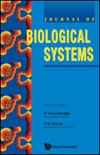ABSORBING MARKOV CHAINS TO CHARACTERIZE AND PREDICT METASTASIS PATHWAYS IN CHILDHOOD CANCER
IF 1.5
4区 数学
Q3 BIOLOGY
引用次数: 0
Abstract
Cancer and its metastasis in children have a high degree of lethality and side effects, so its characteristics need to be studied independently of adult cancer. The aim of this work is to model the metastasis pathways of the main childhood cancers worldwide by Absorbing Markov Chains, an important mathematical tool used for different applications in science. Statistical information was collected to detect the main affected organs (primary sites) and those where cancer cells generally spread and metastasize (secondary sites). Taking into account that it is a branching process, a directed graph was developed, and the associated transition matrices for the first and second metastases were constructed. Organs whose cancers generally remain encapsulated and do not spread their cancer cells are considered absorbing states in terms of Markov processes. For the selected organs, the probability of ending up in each of the absorption states according to the primary site was calculated, as well as the number of possible previous metastases until reaching one of these states. Although the lung in childhood cancer is not a characteristic primary site, it is one of the main sites of metastasis. Therefore, this work dedicates a section to including this organ as a site of possible metastasis.吸收马尔可夫链表征和预测儿童癌症转移途径
儿童癌症及其转移具有高度的致死率和副作用,因此其特征需要独立于成人癌症进行研究。这项工作的目的是通过吸收马尔可夫链来模拟世界范围内主要儿童癌症的转移途径,马尔可夫链是一种重要的数学工具,用于不同的科学应用。收集统计信息以检测主要受累器官(原发部位)和癌细胞普遍扩散和转移的器官(继发部位)。考虑到这是一个分支过程,我们建立了一个有向图,并构建了第一和第二次转移的相关转移矩阵。在马尔可夫过程中,癌细胞通常被包裹起来而不扩散的器官被认为是吸收状态。对于选定的器官,根据原发部位计算其进入每种吸收状态的概率,以及在达到其中一种状态之前可能发生的先前转移的数量。虽然肺癌在儿童癌症中不是特征性的原发部位,但它是转移的主要部位之一。因此,这项工作专门用一个部分来包括这个器官作为一个可能的转移部位。
本文章由计算机程序翻译,如有差异,请以英文原文为准。
求助全文
约1分钟内获得全文
求助全文
来源期刊
CiteScore
2.80
自引率
12.50%
发文量
31
审稿时长
1 months
期刊介绍:
The Journal of Biological Systems is published quarterly. The goal of the Journal is to promote interdisciplinary approaches in Biology and in Medicine, and the study of biological situations with a variety of tools, including mathematical and general systems methods. The Journal solicits original research papers and survey articles in areas that include (but are not limited to):
Complex systems studies; isomorphies; nonlinear dynamics; entropy; mathematical tools and systems theories with applications in Biology and Medicine.
Interdisciplinary approaches in Biology and Medicine; transfer of methods from one discipline to another; integration of biological levels, from atomic to molecular, macromolecular, cellular, and organic levels; animal biology; plant biology.
Environmental studies; relationships between individuals, populations, communities and ecosystems; bioeconomics, management of renewable resources; hierarchy theory; integration of spatial and time scales.
Evolutionary biology; co-evolutions; genetics and evolution; branching processes and phyllotaxis.
Medical systems; physiology; cardiac modeling; computer models in Medicine; cancer research; epidemiology.
Numerical simulations and computations; numerical study and analysis of biological data.
Epistemology; history of science.
The journal will also publish book reviews.

 求助内容:
求助内容: 应助结果提醒方式:
应助结果提醒方式:


